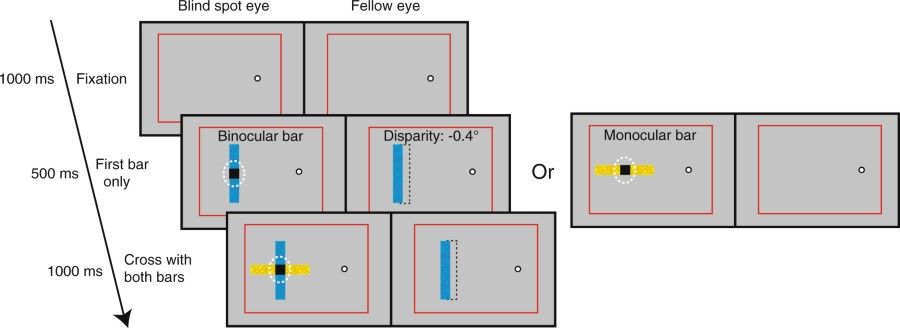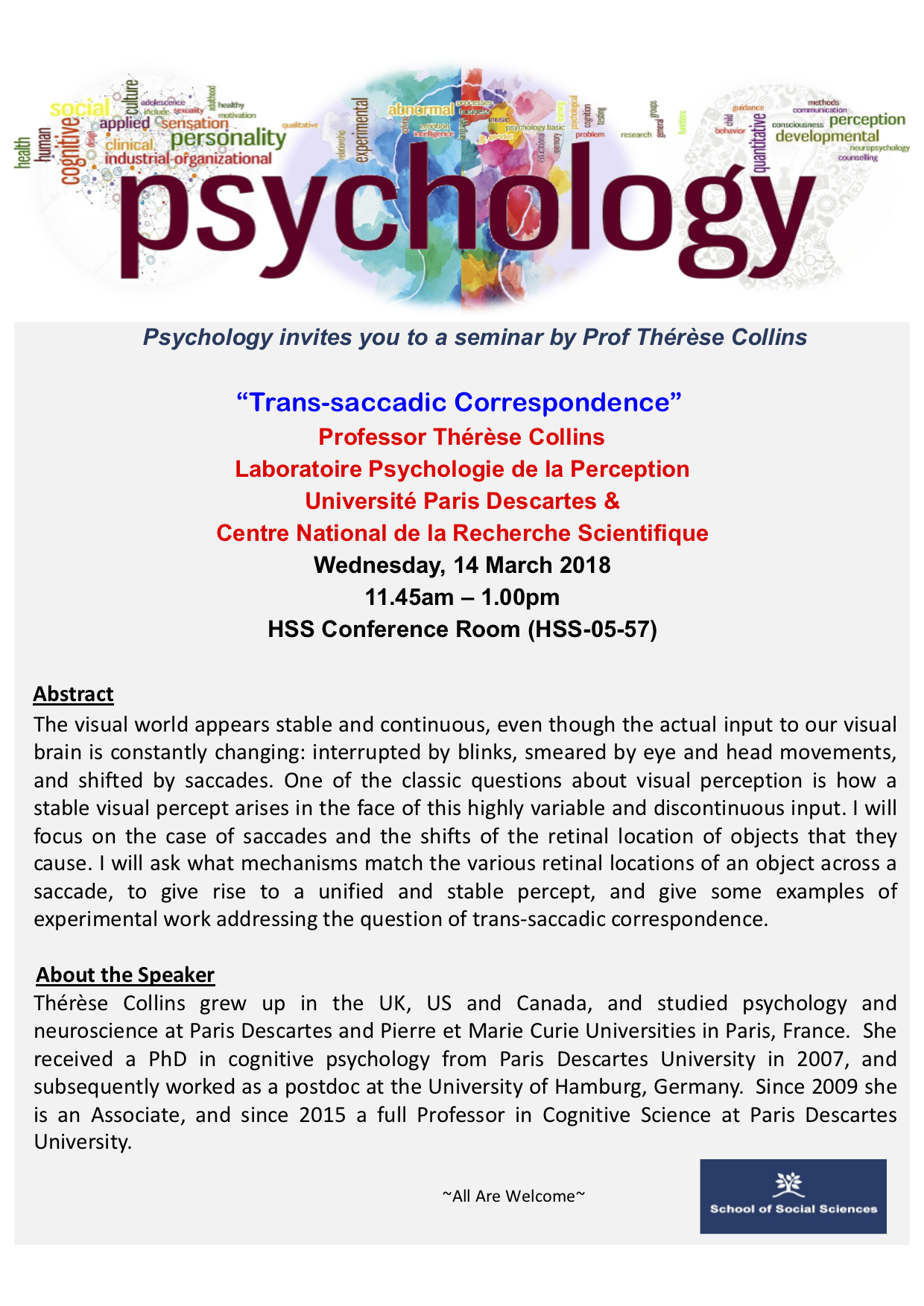In “Illusory occlusion affects stereoscopic depth perception”, published today in Scientific Reports, we show that filled-in percepts in the blind spot can influence our perception of depth of other objects. When two bars cross in the blind spot–one that is filled in and one that is visible to both eyes with an actual disparity signal that should determine its perceived depth–the filled in bar can nevertheless perceived to be in front and also “push” the other bar to be seen further away. This finding tells us more about filling-in processes occuring in visual cortex and how they can influence other perceptual processes.
Congrats to Mandy Chen from UC Berkeley, who worked on this study together with Rachel Denison (now at NYU), David Whitney, and Gerrit Maus (at NTU Singapore).




